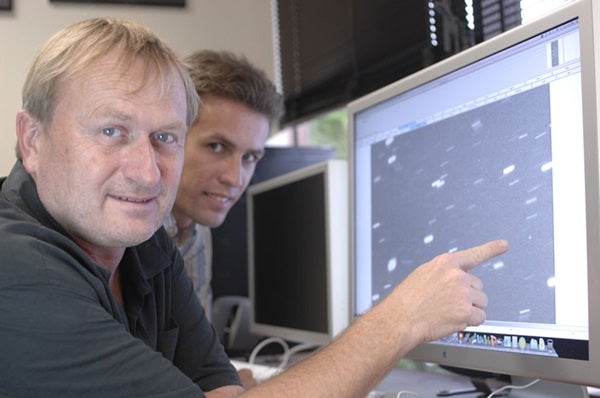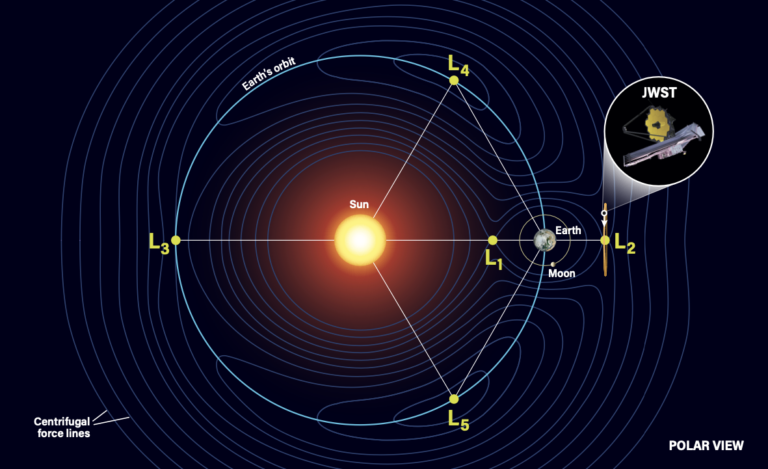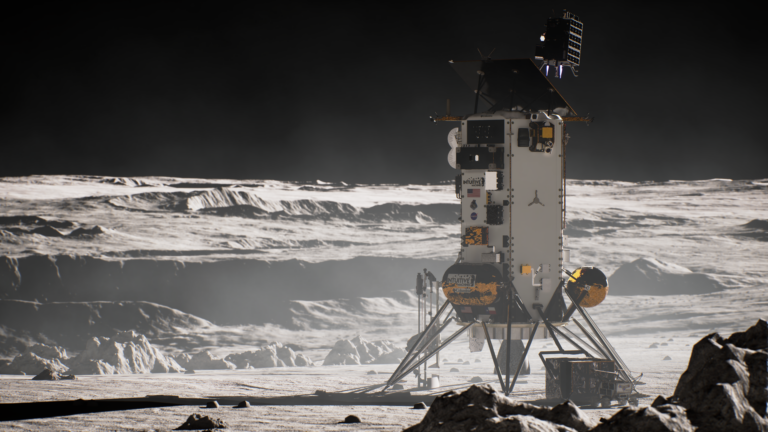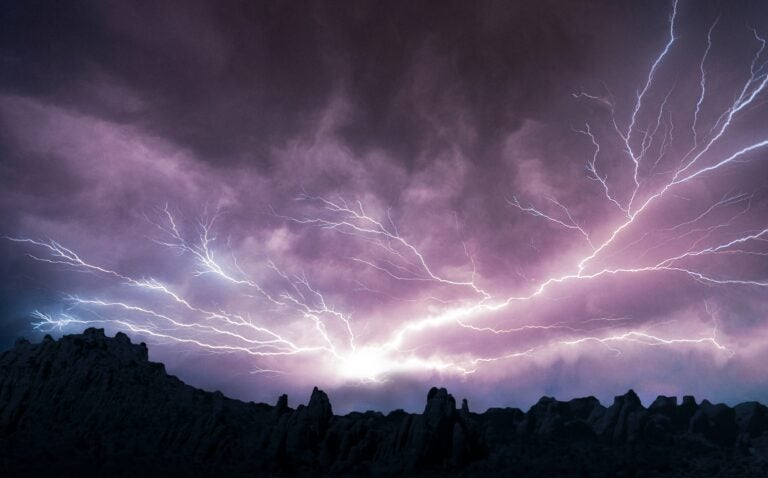“This record number of discoveries shows that PS1 is the world’s most powerful telescope for this kind of study,” said Nick Kaiser, head of the Pan-STARRS project. “NASA and the U.S. Air Force Research Laboratory’s support of this project illustrate how seriously they are taking the threat from near-Earth asteroids.”
Pan-STARRS software engineer Larry Denneau spent that Saturday night in his University of Hawaii office in Honolulu processing the PS1 data as it was transmitted from the telescope over the Internet. During the night and into the next afternoon, he and others came up with 30 possible new near-Earth asteroids.
Asteroids are discovered because they appear to move against the background of stars. To confirm asteroid discoveries, scientists must carefully re-observe them several times within 12-72 hours to define their orbits, otherwise they are likely to be “lost.”
Denneau and colleagues quickly sent their discoveries to the Minor Planet Center in Cambridge, Massachusetts, which collects and disseminates data about asteroids and comets so that other astronomers can re-observe the objects.
“Usually, there are several mainland observatories that would help us confirm our discoveries, but widespread snowstorms there closed down many of them, so we had to scramble to confirm many of the discoveries ourselves,” said Richard Wainscoat from the Institute for Astronomy at the University of Hawaii.
Wainscoat, astronomer David Tholen, and graduate student Marco Micheli spent the next three nights searching for the asteroids using telescopes at Mauna Kea Observatories, Hawaii.
On Sunday night, they confirmed that two of the asteroids were near-Earth asteroids before snow on Mauna Kea forced the telescopes to close. On Monday night, they confirmed nine more before fog set in.
On Tuesday night, they searched for four, but found only one. After Tuesday, the remaining unconfirmed near-Earth asteroids had moved too far to be found again.
Telescopes in Arizona, Illinois, Italy, Japan, Kansas, New Mexico, the United Kingdom, and the Faulkes Telescope on Haleakala also helped to confirm seven of the discoveries.
“This record number of discoveries shows that PS1 is the world’s most powerful telescope for this kind of study,” said Nick Kaiser, head of the Pan-STARRS project. “NASA and the U.S. Air Force Research Laboratory’s support of this project illustrate how seriously they are taking the threat from near-Earth asteroids.”
Pan-STARRS software engineer Larry Denneau spent that Saturday night in his University of Hawaii office in Honolulu processing the PS1 data as it was transmitted from the telescope over the Internet. During the night and into the next afternoon, he and others came up with 30 possible new near-Earth asteroids.
Asteroids are discovered because they appear to move against the background of stars. To confirm asteroid discoveries, scientists must carefully re-observe them several times within 12-72 hours to define their orbits, otherwise they are likely to be “lost.”
Denneau and colleagues quickly sent their discoveries to the Minor Planet Center in Cambridge, Massachusetts, which collects and disseminates data about asteroids and comets so that other astronomers can re-observe the objects.
“Usually, there are several mainland observatories that would help us confirm our discoveries, but widespread snowstorms there closed down many of them, so we had to scramble to confirm many of the discoveries ourselves,” said Richard Wainscoat from the Institute for Astronomy at the University of Hawaii.
Wainscoat, astronomer David Tholen, and graduate student Marco Micheli spent the next three nights searching for the asteroids using telescopes at Mauna Kea Observatories, Hawaii.
On Sunday night, they confirmed that two of the asteroids were near-Earth asteroids before snow on Mauna Kea forced the telescopes to close. On Monday night, they confirmed nine more before fog set in.
On Tuesday night, they searched for four, but found only one. After Tuesday, the remaining unconfirmed near-Earth asteroids had moved too far to be found again.
Telescopes in Arizona, Illinois, Italy, Japan, Kansas, New Mexico, the United Kingdom, and the Faulkes Telescope on Haleakala also helped to confirm seven of the discoveries.










